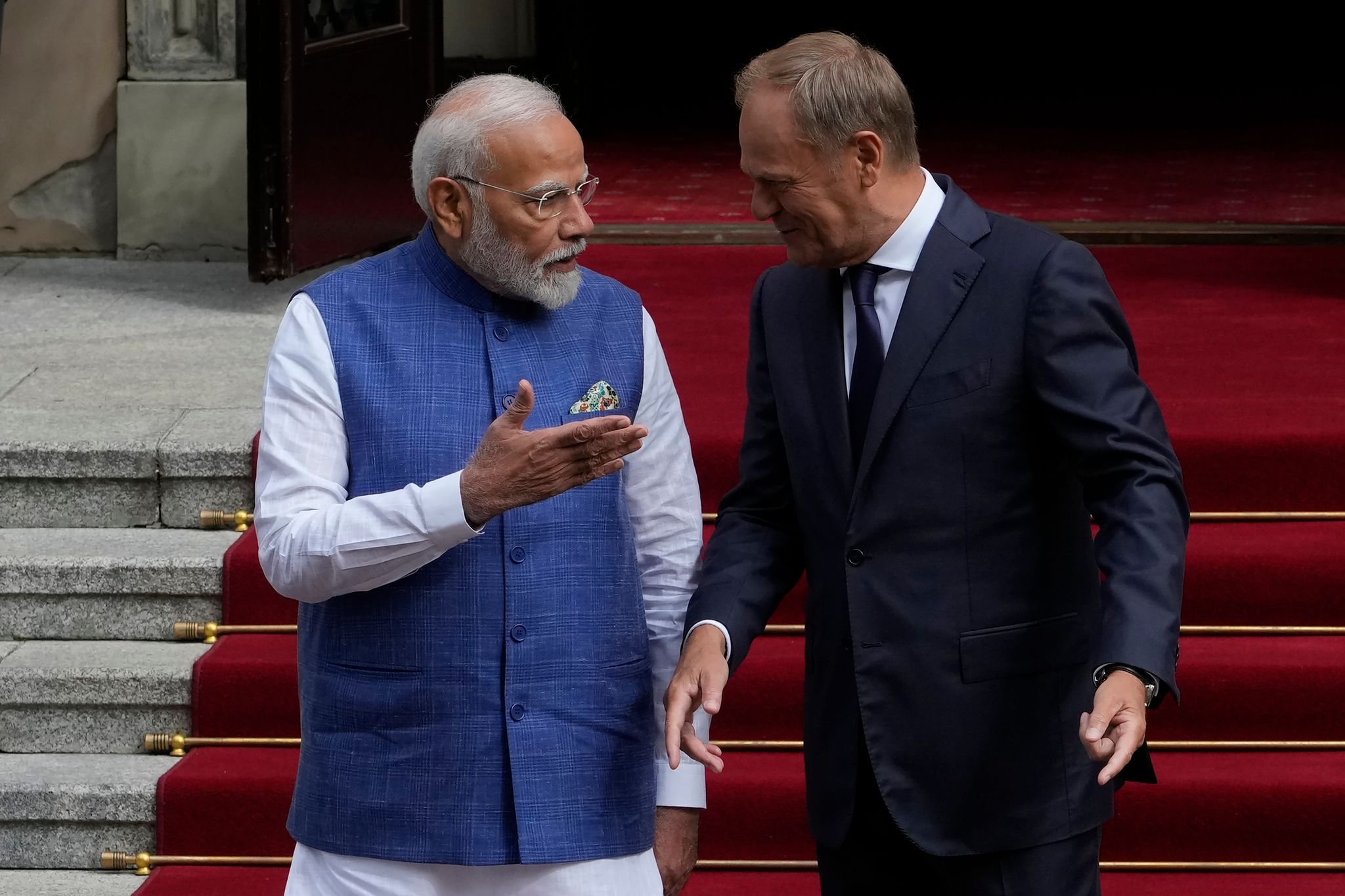Previously the mosque was demolished, now it is a Hindu temple. Hindu nationalism is celebrated on the streets of Mumbai. No moral compass.
Hindu women celebrate the opening of the Ram Temple at Ayodhya in Mumbai Photo: Rafiq Maqbool/ap
On January 21, as I sipped coffee while reading the newspaper on a lazy Sunday morning, I was greeted by an editorial titled “Dawn of a new era in Ayodhya.” As if the title wasn't suspicious enough, the author's name alerted me to the death of Indian journalism.
The text was written by Yogi Adityanath, Prime Minister of the northern Indian state of Uttar Pradesh, where a controversial temple dedicated to the Hindu god Ram will finally be inaugurated. It was this temple – built on the site where the Babri Mosque once stood, which was demolished in 1992, sparking a new vision of India smeared with Hindutva politics – that he was referring to.
Some, if not most, English dailies in India have published similar opinion articles with the same title. This shows how journalism bowed to the saffron army and forgot the daily injustices that culminated in the victory of the temple over the mosque.
The next day, the day of the inauguration, all the news channels broadcast live from Ayodhya as Indian Prime Minister Narendra Modi gave a speech that did not even hide his vision of a purely Hindu India. Secularism, one of the cornerstones of India's kaleidoscope, is not prominent. Monday was declared a national holiday. A photo on social media showed senior doctors at India's main public hospital wearing saffron-colored scarves watching a live broadcast. Don't they have to face medical emergencies in a country where hospitals are always full?
Hindu victory with saffron flag
The streets of Mumbai are empty. As I waited for a long time for the bus – the bus fleet has been reduced in recent months – I saw a group of men on motorbikes: without helmets, but with saffron flags, shouting “Jai Shri Ram”. The lack of job opportunities for the younger generation in the country with the second largest population in the world causes them to be burdened with a sense of patriotism; encouraged to place Hindu deities on top of Muslim mosques, a Hindutva idea.
There are other columns in other parts of the city. This time it was bigger and richer: men in stylish convertibles flying the same flag. In the evenings, techno-remixed Hindu chants are heard throughout the city – where the everyday economy once triumphed over communal differences, even as Muslims continue to face discrimination in various ways. This is Hindutva on steroids.
There were two types of posts on my social media that day: one celebrating the “Hindu victory” and the other posting the preamble to the Indian Constitution. In 1949 it was declared that the people of India had “solemnly resolved to make India a sovereign socialist, secular and democratic republic” to guarantee justice, liberty, equality and fraternity. I posted it too; it is my silent call that the foundations of India as a secular society are not forgotten.
I am reminded of films about Nazism, which show the dark times of the 20th century in Germany with the flood of swastika flags and show the impact of brainwashing on society. The same thing is happening in India today, I can only describe it in words that cannot fully explain the extent of the fascism we saw on the streets that day.
Translated from English with support from DeepL

“Subtly charming web junkie. Unapologetic bacon lover. Introvert. Typical foodaholic. Twitter specialist. Professional travel fanatic.”







